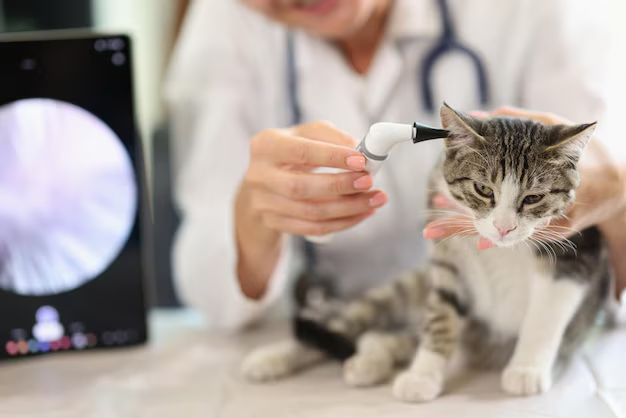Understanding Canine Cataracts: How to Recognize and Respond
Picture this: You're throwing a ball in the yard, and your trusty canine catches it mid-air, a master of agility. But lately, you notice something different in their eyes, a cloudiness that was not there before. Could it be cataracts? Cataracts in dogs are more common than many pet owners realize, and early detection can make a significant difference in your pet's quality of life. This guide delves into how you can tell if your dog might have cataracts, the factors at play, and what to consider moving forward.
🎯 What Are Cataracts?
Before diving into signs and detection, let's clarify what cataracts are. Cataracts refer to the clouding of the lens inside the eye, which can lead to blurred vision and, in severe cases, blindness. They are a common cause of vision impairment in dogs, affecting their ability to navigate their environment confidently.
What Causes Cataracts in Dogs?
Cataracts can result from several factors, including:
- Genetics: Certain breeds, such as Cocker Spaniels, Poodles, and Siberian Huskies, are genetically predisposed.
- Aging: As dogs age, the likelihood of developing cataracts increases.
- Diabetes Mellitus: Diabetic dogs are at a higher risk for developing cataracts.
- Injury or Trauma: An injury to the eye can result in cataract formation.
- Nutritional Deficiencies: Poor diet during development can lead to cataracts.
Understanding the cause can help with prevention or management strategies tailored to your dog's individual needs.
🕵️ Identifying Cataracts: Symptoms and Signs
Recognizing cataracts early is crucial for appropriate management. While only a professional examination can confirm a diagnosis, there are several telltale signs that may indicate the presence of cataracts in your dog.
Visual Changes
- Cloudy Eyes: One of the most noticeable signs is a milky or cloudy appearance in one or both eyes.
- Color Changes: A blue or white hue developing on the lens can be an early indicator.
Behavioral Changes
- Bumping Into Objects: Dogs with poor vision might walk into furniture, walls, or other obstacles.
- Reluctance to Move in Low Light: You may notice hesitance or difficulty navigating darker environments.
Other Indications
- Squinting or Avoiding Light: Affected dogs might become sensitive to bright lights.
- Changes in Pupillary Response: If your dog's pupils react differently to light, it could signal an issue.
These symptoms, while common, could also indicate other eye conditions. Observing these changes warrants a conversation with your veterinarian.
🩺 What Happens at the Vet?
When you visit the vet, the examination process is comprehensive. Here's what to expect:
Initial Assessment
An initial assessment will involve a thorough conversation about any changes you've observed in your dog's behavior or vision. This discussion helps the veterinarian understand the extent and nature of the vision issues.
Eye Examination
- Slit Lamp Examination: A detailed inspection of the eye's different parts, such as the lens and cornea.
- Ophthalmoscopy: This procedure helps examine the retina and optic nerve.
Additional Testing
- Ultrasound: Sometimes necessary if the view to the back of the eye is obscured.
- Blood Tests: Especially valuable for diabetic dogs, to understand the systemic health contributing to cataracts.
These procedures are vital in confirming whether cataracts are present and evaluating any associated issues.
🌟 Options and Next Steps
Once cataracts are diagnosed, there are management strategies that can help your dog continue living a happy and active life.
Monitoring
In some cases, it may be appropriate to simply monitor the cataracts. Regular check-ups will ensure that any changes are detected and managed promptly.
Dietary Adjustments
Ensuring a balanced diet can help support overall eye health. Your veterinarian might recommend specific dietary changes or supplements.
Surgical Intervention
- Cataract Surgery: The only definitive treatment for cataracts is surgical removal. This procedure is typically quite successful but requires your dog to be otherwise healthy enough to undergo surgery.
Vision Aids
Leveraging modern technology designed for pets can improve their navigation and quality of day-to-day activities if surgery is not an option.
🐾 Living with a Dog with Cataracts
The presence of cataracts doesn't mean the end of an active lifestyle for your dog. Here are some ways you can improve their day-to-day experience:
Environmental Modifications
- Safe Space Creation: Keep their environment consistent. Avoid moving furniture around to prevent disorientation.
- Non-Slip Mats: Install mats to reduce slipping accidents, especially around stairs.
Training and Communication
- Commands and Cues: Further train your dog using verbal cues to navigate and engage with their surroundings.
- Interactive Playtime: Use toys with sounds or scents to keep playtime engaging.
These adaptations can help maintain or even improve your dog's confidence and enjoyment of life.
📊 Quick Reference Summary
Here's a useful summary of key points to remember:
| Task | Suggestion | Emoji |
|---|---|---|
| Observe Behavior | Look for changes in navigating spaces and light sensitivity. | 🔍 |
| Vet Consultation | Schedule a professional assessment for an accurate diagnosis. | 🩺 |
| Consider Genetics | Be aware of breed predispositions to cataracts. | 🐶 |
| Plan Diet | Maintain a balanced diet that supports eye health. | 🥕 |
| Explore Surgery | Consider surgery if it's a viable option for your dog's health. | ⚕️ |
| Adapt Environment | Create a safe, easy-to-navigate home environment. | 🛋️ |
Final Thoughts: Fostering a Supportive Environment
Cataracts in dogs can seem daunting, but understanding and taking informed steps can make a world of difference. By recognizing the signs early and working closely with your veterinarian, you can make the best decisions for your dog's health. Remember, adaptation and support are key, and maintaining a loving environment is the best way to keep your pet feeling secure and happy. 🐾
